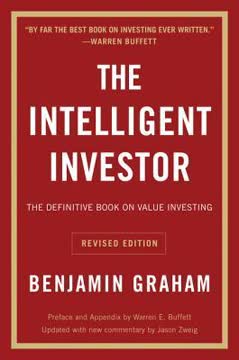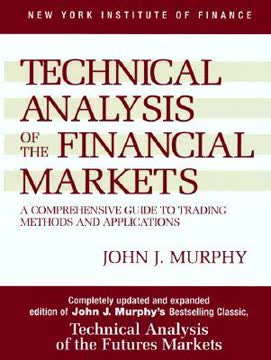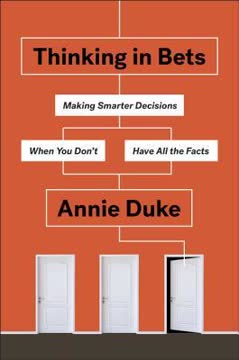Key Takeaways
1. Economic indicators are vital tools for predicting market trends and making informed investment decisions
"If you want to know where the economy has been, where it is, and where it is headed, start here!"
The power of economic indicators. Economic indicators are statistical measures that provide insights into the health and direction of an economy. They serve as crucial tools for investors, policymakers, and businesses to make informed decisions. By analyzing these indicators, one can anticipate economic trends, identify potential investment opportunities, and mitigate risks.
Types of indicators. Economic indicators can be classified into three main categories:
- Leading indicators: Predict future economic events (e.g., housing permits, stock market performance)
- Coincident indicators: Reflect current economic conditions (e.g., GDP, employment rates)
- Lagging indicators: Confirm long-term trends (e.g., unemployment rates, corporate profits)
Using indicators effectively. To maximize the value of economic indicators, it's essential to:
- Monitor multiple indicators for a comprehensive view
- Understand the context and limitations of each indicator
- Look for trends and patterns rather than isolated data points
- Consider the interplay between different indicators
2. Consumption indicators provide insights into consumer behavior and economic health
"Americans love to consume stuff, and consumption is a vital part of our overall economic well-being."
The importance of consumption. Consumer spending accounts for approximately 70% of the U.S. economy, making it a critical driver of economic growth. Monitoring consumption indicators helps investors and policymakers gauge the overall health of the economy and anticipate future trends.
Key consumption indicators include:
- Automobile sales
- Chain store sales
- Consumer sentiment
- Existing home sales
- Underemployment or slack
Interpreting consumption data. When analyzing consumption indicators, consider:
- Long-term trends rather than short-term fluctuations
- Seasonal variations in consumer behavior
- The impact of external factors (e.g., government policies, global events)
- The relationship between different consumption indicators
3. Investment indicators reveal business confidence and future economic activity
"Because semiconductors are used in so many cool gadgets, both at home and in the workplace, we can gain some insight into the health of the broad economy generally, and more specifically into some parts of the tech sector, by looking at the health of the semiconductor business."
Business investment as an economic barometer. Investment indicators provide valuable insights into business confidence and future economic activity. By monitoring these indicators, investors can anticipate shifts in economic cycles and make informed decisions about sector-specific investments.
Key investment indicators include:
- Book-to-bill ratio (semiconductor industry)
- Copper price
- Durable goods orders
- Housing permits and starts
- Industrial production and capacity utilization
Analyzing investment data. When interpreting investment indicators:
- Look for trends across multiple indicators
- Consider the impact of technological advancements on traditional indicators
- Evaluate the relationship between business investment and consumer spending
- Account for industry-specific factors that may influence investment patterns
4. Government spending and deficit indicators offer clues about economic stability and future growth
"When government spends more money than it receives in the form of tax revenues, the result is called a deficit. It's like a gaping hole in the budget."
The role of government in the economy. Government spending and deficit indicators provide insights into fiscal policy, economic stability, and potential future challenges. These indicators can help investors anticipate changes in interest rates, inflation, and overall economic growth.
Key government indicators:
- Federal government budget deficits
- National debt levels
- Government spending patterns
Interpreting government data. When analyzing government indicators:
- Consider the long-term implications of deficits and debt
- Evaluate the impact of government policies on different economic sectors
- Assess the relationship between government spending and private sector activity
- Monitor changes in tax policies and their potential effects on businesses and consumers
5. Net export indicators shed light on global economic dynamics and currency movements
"The current account is technically the trade balance plus net income from interest and dividends plus net foreign aid."
The importance of international trade. Net export indicators provide insights into a country's competitiveness in the global market, currency valuations, and overall economic health. These indicators are particularly valuable for investors interested in international markets and currency trading.
Key net export indicators:
- Baltic Dry Index
- Big Mac Index
- Current account deficit
- Oil inventories
- Tankan Survey
- TIC data
Analyzing net export data. When interpreting net export indicators:
- Consider the impact of exchange rates on trade balances
- Evaluate the relationship between exports and domestic economic growth
- Assess the influence of global economic conditions on trade patterns
- Monitor changes in trade policies and their potential effects on specific industries
6. Multiple component indicators provide a comprehensive view of economic health
"The ADS index may be used to compare business conditions at different times."
The power of comprehensive indicators. Multiple component indicators combine various economic measures to provide a more holistic view of economic health. These indicators are particularly useful for investors seeking a broad understanding of economic conditions and potential turning points.
Key multiple component indicators:
- Beige Book
- Crack spread
- Credit Availability Oscillator
- Federal funds rate
- GDP per capita
- Yield curve
Interpreting multiple component data. When analyzing these indicators:
- Consider the relative weights of different components
- Look for divergences between components that may signal economic shifts
- Evaluate the historical performance of the indicator in predicting economic trends
- Use multiple component indicators in conjunction with more specific economic measures
7. Inflation, fear, and uncertainty indicators signal potential economic turbulence
"When the VIX spikes up over 20% in a day, it's often a very good time to buy the market, regardless of whether we are in a bull or bear market."
The impact of sentiment on markets. Inflation, fear, and uncertainty indicators provide valuable insights into market psychology and potential economic turbulence. These indicators can help investors anticipate market volatility and make more informed risk management decisions.
Key inflation, fear, and uncertainty indicators:
- GDP Deflator
- Gold price
- Misery Index
- Producer Price Index
- CBOE Volatility Index (VIX)
- TIPS spread
Using sentiment indicators effectively. When interpreting these indicators:
- Look for extreme readings that may signal market turning points
- Consider the relationship between different sentiment indicators
- Evaluate the historical context of current sentiment levels
- Use sentiment indicators in conjunction with fundamental economic data for a more comprehensive analysis
Last updated:
FAQ
What's "The WSJ Guide to the 50 Economic Indicators That Really Matter" about?
- Comprehensive Guide: The book, authored by Simon Constable and Robert E. Wright, is a comprehensive guide to understanding economic indicators that are crucial for smart investing.
- Focus on Indicators: It focuses on 50 economic indicators, ranging from well-known metrics to obscure ones, that can help investors predict market trends and make informed decisions.
- Practical Application: The book aims to equip readers with the knowledge to protect and grow their investments by understanding economic trends and data.
- Beyond Basics: It goes beyond basic indicators like GDP and CPI, encouraging readers to look at less obvious data points for a competitive edge.
Why should I read "The WSJ Guide to the 50 Economic Indicators That Really Matter"?
- Investment Edge: The book provides insights into economic indicators that can give investors an edge in the market.
- Avoiding Pitfalls: It helps readers avoid common investment mistakes by understanding economic cycles and indicators.
- Diverse Indicators: The book covers a wide range of indicators, from consumption and investment to government and net exports, offering a holistic view of the economy.
- Practical Advice: It offers practical advice on how to use these indicators to make better investment decisions.
What are the key takeaways of "The WSJ Guide to the 50 Economic Indicators That Really Matter"?
- Understanding Indicators: Learn about 50 key economic indicators and how they impact the market.
- Investment Strategies: Discover strategies to use these indicators for making informed investment decisions.
- Economic Cycles: Gain insights into how economic cycles work and how to anticipate changes.
- Risk Management: Understand how to manage investment risks by interpreting economic data.
How does "The WSJ Guide to the 50 Economic Indicators That Really Matter" help investors?
- Predictive Power: The book teaches how to use economic indicators to predict market trends and economic turns.
- Diverse Perspectives: It encourages looking at the economy from multiple angles, including unconventional indicators like the Big Mac Index.
- Data Interpretation: Offers guidance on interpreting data to make proactive investment decisions.
- Long-term Focus: Emphasizes long-term investing strategies over short-term speculation.
What are some unique indicators discussed in "The WSJ Guide to the 50 Economic Indicators That Really Matter"?
- Big Mac Index: A fun yet insightful indicator that uses the price of a Big Mac to assess currency valuation.
- Zombie Bank Ratio: An indicator that helps identify banks that are financially unstable.
- Vixen Index: A quirky indicator that uses the attractiveness of waitstaff as a measure of economic health.
- Crack Spread: Measures the profitability of refining crude oil into gasoline, indicating energy market trends.
How does "The WSJ Guide to the 50 Economic Indicators That Really Matter" categorize economic indicators?
- Consumption Indicators: Includes metrics like automobile sales and consumer sentiment to gauge consumer behavior.
- Investment Indicators: Covers indicators like the book-to-bill ratio and housing permits to assess business investment trends.
- Government Indicators: Focuses on metrics like federal budget deficits to understand government economic impact.
- Net Exports Indicators: Analyzes indicators like the Baltic Dry Index to evaluate international trade dynamics.
What is the significance of the "Big Mac Index" in "The WSJ Guide to the 50 Economic Indicators That Really Matter"?
- Currency Valuation: The Big Mac Index is used to assess whether currencies are overvalued or undervalued based on the price of a Big Mac in different countries.
- Purchasing Power Parity: It is based on the theory of purchasing power parity, which suggests that identical goods should cost the same in different countries.
- Long-term Currency Trends: The index can help predict long-term currency trends and potential adjustments.
- Investment Implications: Investors can use it to make informed decisions about currency investments.
How does "The WSJ Guide to the 50 Economic Indicators That Really Matter" explain the "Zombie Bank Ratio"?
- Bank Stability: The Zombie Bank Ratio helps identify banks that are financially unstable and unable to lend effectively.
- Texas Ratio: It compares a bank's bad assets to its available capital, with a ratio over 100% indicating potential failure.
- Investment Risk: High ratios suggest increased risk in the banking sector, impacting investment decisions.
- Economic Impact: Zombie banks can drag on economic recovery by restricting credit flow.
What is the "Crack Spread" and its relevance in "The WSJ Guide to the 50 Economic Indicators That Really Matter"?
- Refinery Profitability: The Crack Spread measures the profitability of refining crude oil into gasoline and heating oil.
- Market Dynamics: It indicates supply and demand dynamics in the energy market, affecting oil prices.
- Investment Opportunities: Investors can use it to assess the profitability of energy companies and make informed decisions.
- Economic Indicator: Changes in the crack spread can signal shifts in economic activity related to energy consumption.
How does "The WSJ Guide to the 50 Economic Indicators That Really Matter" address inflation indicators?
- GDP Deflator: The book discusses the GDP deflator as a broad measure of inflation across the economy.
- Producer Price Index: It highlights the PPI as an indicator of inflation at the producer level, impacting consumer prices.
- TIPS Spread: The TIPS spread is used to gauge market expectations of future inflation.
- Investment Strategies: Understanding these indicators helps investors protect against inflationary risks.
What are the best quotes from "The WSJ Guide to the 50 Economic Indicators That Really Matter" and what do they mean?
- "Economic forecasting is more art than science." This emphasizes the complexity and unpredictability of economic forecasting.
- "The more indicators an investor tracks, the better feel for the economy she will develop." It highlights the importance of a comprehensive approach to understanding economic trends.
- "Successful investing means making and keeping above-market returns at each stage of the business cycle." This underscores the goal of consistent, informed investing.
- "Your capacity to accurately predict stems from a combination of sound historical trend data and a model that correctly identifies causal agents." It stresses the need for a solid understanding of economic causation.
How can I apply the knowledge from "The WSJ Guide to the 50 Economic Indicators That Really Matter" in real-world investing?
- Study Regularly: Set aside time to study economic indicators and understand their implications.
- Paper Trades: Practice with paper trades to apply knowledge without financial risk.
- Monitor Trends: Keep an eye on economic trends and adjust investments accordingly.
- Diversify Indicators: Use a variety of indicators to get a comprehensive view of the economy and make informed decisions.
Review Summary
The WSJ Guide to the 50 Economic Indicators That Really Matter receives generally positive reviews, with readers praising its clarity and usefulness for investors. Many find it a valuable reference for understanding economic indicators and their impact on markets. Some reviewers note its US-centric approach and suggest it's best suited for beginners. Critics mention that some information may be outdated, and a few readers find the content basic. Overall, readers appreciate the book's practical approach and concise explanations of complex economic concepts.
Similar Books










Download PDF
Download EPUB
.epub digital book format is ideal for reading ebooks on phones, tablets, and e-readers.




